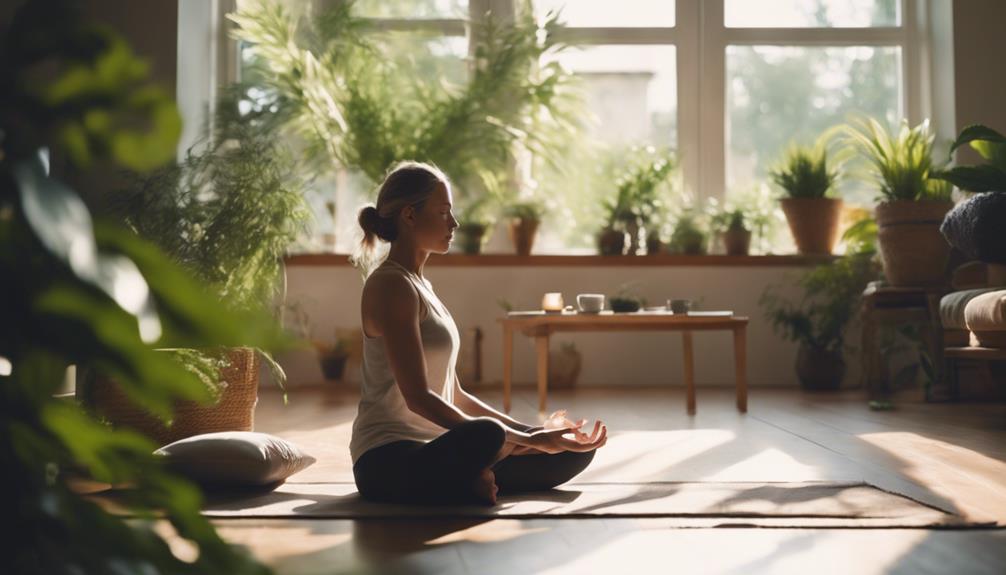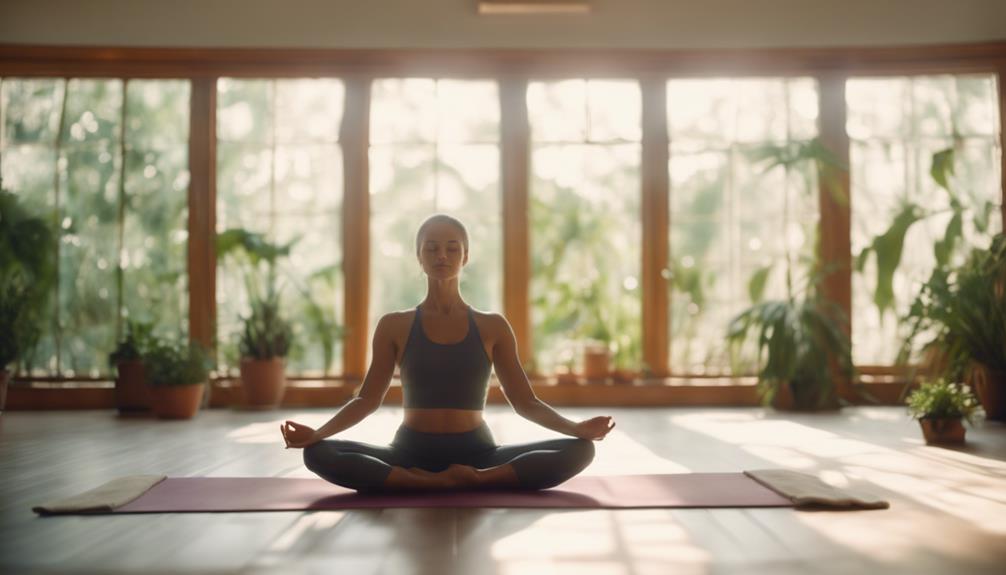Yoga is a practice that has been around for a seriously significant time-frame, offering different physical and mental benefits to the people who practice it reliably. From extended versatility and fortitude to diminished stress and anxiety, yoga has been shown to chip away at for the most part thriving in different ways. However, for amateurs, investigating the universe of yoga poses can regularly feel overwhelming with such endless decisions to peruse.
1. yoga and its benefits for mind, body, and soul
Yoga is a practice that has been around for a seriously prolonged stretch of time, beginning in old India. It is a complete method for managing health and flourishing that bright lights on the relationship between the mind, body, and soul. Through a movement of poses, breathing techniques, and examination, yoga helps with chipping away at physical strength, flexibility, and balance, as well as mental clarity and near and dear reliability.
One of the essential benefits of practicing yoga is its ability to decrease stress and anxiety. In the current speedy moving world, huge quantities of us are ceaselessly rearranging work, family, and various responsibilities, provoking raised levels of stress. Yoga gives a space to us to tone down, base on our breath, and conveyance strain in the body. By practicing yoga reliably, we can sort out some way to supervise stress even more and foster a sensation of inside concordance and quiet.
Besides, yoga is an amazing strategy for chipping away at physical fitness. Various yoga poses are expected to build up and condition the muscles, increase versatility, and further foster posture. Whether you’re a fledgling or arranged yogi, there are poses for every level of inclusion. With standard practice, you will see updates in your overall strength and perseverance, as well as extended energy levels and vitality.
Another benefit of yoga is its ability to chip away at mental clearness and fixation. By calling attention to the breath and synchronizing improvement with breath, yoga helps with quieting the mind and addition center. This can be especially valuable for individuals who fight with hustling contemplations or experience issues staying present at that point. Through common practice, you can redesign your ability to be mindful and totally partook in anything that task you are facing.
Despite the physical and mental benefits, yoga similarly has a supernatural part that can help us with interfacing with our interior personalities and our overall environmental factors. Through thought and significant breathing exercises, we can exploit a sensation of interior congruity and concordance. This can provoke a more important sensation of purpose and fulfillment in our lives, as we become more open to our own characteristics and convictions.
By and large, yoga is areas of strength for a that can help the mind, body, and soul. Whether you are expecting to deal with your physical fitness, decrease stress, update mental clarity, or foster a more significant sensation of supernatural quality, yoga offers a far reaching method for managing health and thriving. By coordinating yoga into your everyday regular practice, you can experience a more important sensation of balance, concordance, and criticalness in all pieces of your life.
2. Understanding fundamental yoga poses, for instance, Mountain Pose, Downward Facing Dog, and Child’s Pose
Exactly when you at first start practicing yoga, understanding all of the different poses and their names can overwhelm. However, by starting with the basics, you can spread out solid areas for a for your practice. Three notable poses that are by and large shown in fledgling yoga classes are Mountain Pose, Downward Facing Dog, and Child’s Pose.
Mountain Pose, generally called Tadasana, may seem, by all accounts, to be fundamental all along, yet it is actually maybe of the primary pose in yoga. To practice Mountain Pose, stand tall with your feet hip-width isolated, laying out every one of the four corners of your feet into the mat. Interface with your thigh muscles and lengthen your spine as you show up at your arms some place close to your sides. This pose further creates posture, balance, and focus.
Downward Facing Dog, or Adho Mukha Svanasana, is a staple in most yoga classes and is fundamental for building strength and flexibility in the entire body. To come into Downward Facing Dog, start your hands and knees in a tabletop position. Press into your palms and lift your hips up and back, fixing your legs as you make a changed Rakish shape with your body. Draw in your navel towards your spine and relax your head between your arms. Downward Facing Dog broadens the hamstrings, calves, shoulders, and spine while in like manner growing blood stream to the brain.
Child’s Pose, or Balasana, is a resting pose that is as a rule used as a change between extra troublesome poses. To practice Child’s Pose, bow on the mat with your huge toes reaching and knees spread isolated. Sit back onto your heels and wrinkle forward, laying your forehead on the mat and extending your arms out before you or by your sides. This pose delicately extends the hips, thighs, and lower legs while furthermore quieting the mind and mitigating stress.
By getting it and practicing these fundamental yoga poses, you can start to foster grit, versatility, and mindfulness in your body. Remember that yoga is a non-relentless practice, so focus on your body and honor its hindrances. If a pose doesn’t feel ideal for you, transform it or skip it totally. It makes a big difference to focus in on your breath and alignment in each pose to hinder injury and foster your practice long term.
As you continue to explore yoga, you could encounter much more poses with fluctuating difficult situations. Regardless, by ruling the fundamentals like Mountain Pose, Downward Facing Dog, and Child’s Pose, you will be outstanding to progress in your practice and get the mental and physical prizes that yoga offers of real value.
3. Tips for proper alignment and breathing techniques during yoga practice
As an issue of some significance, we ought to talk about alignment. Suitable alignment in yoga poses ensures that you are getting the full benefits of the pose while safeguarding your body. One basic piece of alignment is to keep your body in a methodical style at whatever point what is going on permits. This suggests that while standing, your feet should be hip-width isolated and equivalent, your shoulders should be stacked straight over your hips, and your neck should be as per your spine.
Another huge piece of alignment is to attract your core muscles. This helps with shielding your lower back and balance out your body in various poses. To interface with your core, draw in your navel towards your spine and lift your pelvic floor muscles. This will help you with staying aware of legitimate alignment and trustworthiness all through your practice.
Concerning breathing, the breath is a fundamental piece of yoga practice. Proper breathing techniques can help you with relaxing, focus, and foster your poses. Overall, you want to breathe significantly and similarly through your nose all through your practice. This helps with quieting your tangible framework and oxygenate your body.
One typical breathing technique used in yoga is ujjayi breath, generally called “ocean breath”. To practice ujjayi breath, fix the back of your throat to some degree as you breathe in and breathe out. This makes a sensitive sound like ocean waves, which can help you with staying on target and present during your practice.
Coordinating breath with advancement is another critical piece of yoga practice. Breathe in as you lengthen or lift, and breathe out as you overlay or curve. This relationship among breath and improvement helps you with traveling through poses effectively and class.
As you travel through your practice, center around your breath and focus on your body. If you end up stopping your breathing or stressing in a pose, dial down and delay briefly to breathe significantly preceding procedure. Recall that yoga isn’t connected to convincing your body into a pose, yet rather about finding a balance among effort and straightforwardness. Ultimately, legitimate alignment and breathing techniques are fundamental for a safeguarded and effective yoga practice. By focusing on your body and breath, you can work on your practice and foster your relationship wit




